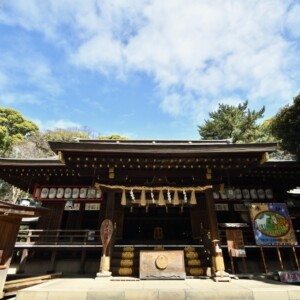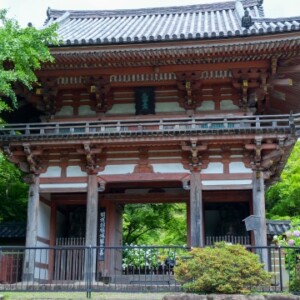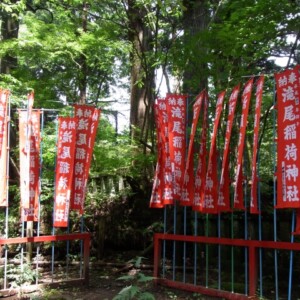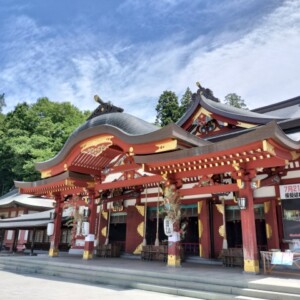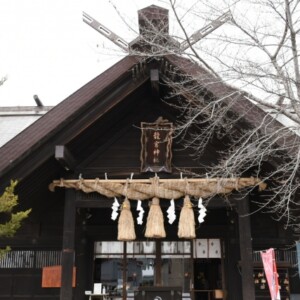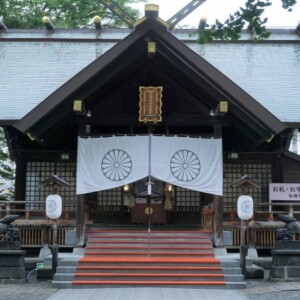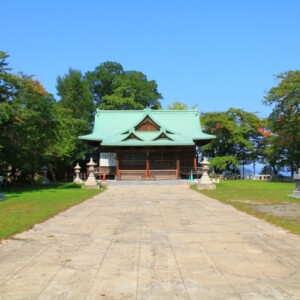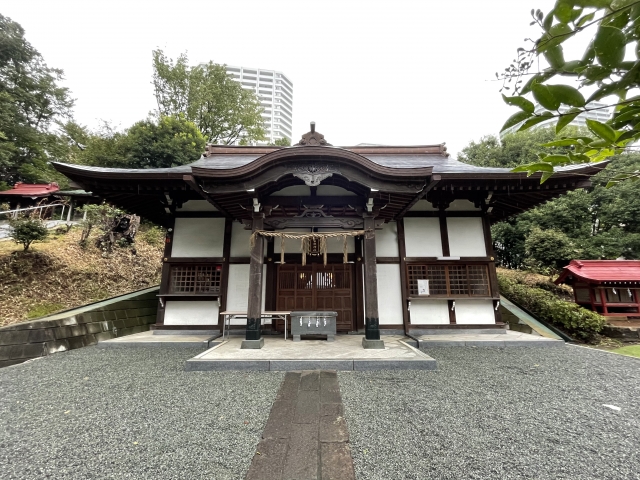
Shirahata Shrine|Complete guide to the history, highlights, and worship information of this historic shrine
Shirahata Shrine, located in Fujisawa City, Kanagawa Prefecture, is a venerable old shrine dedicated to Minamoto no Yoshitsune and Samukawa Hiko no Mikoto. As the stage of the legend of Minamoto no Yoshitsune that has continued for about 700 years, the shrine is visited by many worshippers who wish for the fulfillment of their martial arts and studies.
Outline and basic information about Shirahata Shrine

Shirahata Shrine is a historic shrine located in Fujisawa 2-chome, Fujisawa City, Kanagawa Prefecture, and is affectionately known locally as “Shirahata-sama. It was founded as a branch shrine of Samukawa Shrine, the first shrine in Sagami-no-kuni, and later enshrined Minamoto no Yoshitsune, which gave the shrine its present name. Although the precincts of the shrine are not large, it is a quiet space surrounded by deep greenery, maintaining a calm environment for worship despite its urban location.
History and Origin
Shirahata Shrine was founded a long time ago and was originally named Samukawa Shrine after Samukawa Shrine, the first shrine in Sagami Province, was invited to the shrine. In 1198 (Kenkyu 9), Kakunori, the abbot of Shogonji Temple, was appointed as the head priest of the shrine, and the shrine was operated in the form of a syncretism between Shintoism and Buddhism.
The shrine’s close relationship with Minamoto no Yoshitsune began in 1189. It is said that the head of Minamoto no Yoshitsune, who committed suicide in Oshu Hiraizumi, was buried here after Yoshimori Wada and Kagetoki Kajiwara conducted a trial of the head in Koshigoe. In September 1249, based on this legend, Yoshitsune was enshrined at the shrine, which is now called Shirahata Shrine.
During the Kyoho period (1716-1735), the shrine was granted the rank of Shoichi (the highest rank in the Shinto religion), and its prestige was enhanced as the general guardian of the town of Sakado. The current shrine building was rebuilt between 1828 and 1835 after a fire in 1820, and still retains the characteristics of shrine architecture from the late Edo period.
Deities and Benefits
The two main deities of Shirahata Shrine are Samukawa Hiko-no-mikoto and Minamoto no Yoshitsune. Samukawa Hiko-no-mikoto has long been worshipped as the deity of Sagami-no-Ichinomiya Samukawa Shrine, and is known as the god of protection against bad luck and direction. He is believed to protect us from various misfortunes in life through his divine power to ward off evil in all directions.
Minamoto no Yoshitsune is known as a brilliant military commander who excelled in martial arts, performing arts, and academics, and his divine virtues are said to be beneficial for academic success, corporate prosperity, and the advancement of martial arts. The shrine is especially favored by people seeking superior abilities and victory, such as students preparing for entrance examinations and athletes. The shrine also enshrines Amaterasu, Okuninushi no Mikoto, Oyamahigashimikoto, and Kunisazuchi no Mikoto, all of whom are believed to bring a wide range of blessings to the shrine.
Highlights and Features of Shirahata Shrine
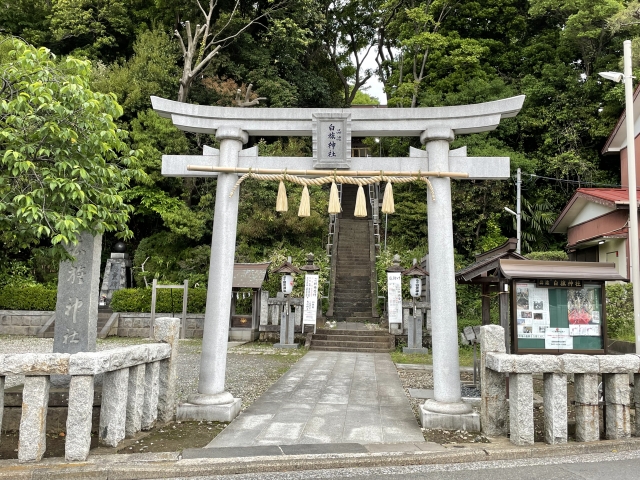
Although not large in size, Shirohata Shrine attracts visitors with its numerous historical sites related to the legend of Minamoto no Yoshitsune and beautiful natural scenery. Stepping into the shrine grounds, one can feel the weight of history in the sacred space surrounded by silence, even though it is located in an urban area.
Architectural and Structural Attractions
The shrine pavilion of Shirahata Shrine is a Nagaregongen-zukuri building completed in 1835, and conveys the beauty of shrine architecture from the late Edo period (1603-1868) to the present day. Although not a large shrine building, it welcomes worshippers with its sturdy structure and noble appearance.
The main hall is decorated with magnificent carvings, especially the lion sculpture placed to protect the main hall, which gives a sense of majesty in guarding the shrine. The stone steps leading up to the hall of worship are steep, and climbing up the path surrounded by deep groves of trees has the effect of switching one’s mind from the mundane world to the Shinto realm.
The shrine also has a portable shrine and other outbuildings on the grounds, and red seals and various types of amulets are available at the shrine office. The overall structure is simple yet dignified, allowing visitors to appreciate the beauty of the shrine’s architecture.
Historic Sites Related to Minamoto no Yoshitsune and Benkei
The most distinctive feature of Shirahata Shrine is the numerous historical sites related to Minamoto no Yoshitsune and Musashibo Benkei. A dynamic bronze statue of Minamoto no Yoshitsune and Musashibo Benkei stands on the shrine grounds, attracting the attention of history buffs as a magnificent representation of the bond between the two masters. The bronze statue was erected in the hope that the spirits of the squires may rest in peace because of their relationship with the nearby Jokoji Hachioji Shrine, where Benkei is enshrined.
On the east side of the main hall is a sacred stone called “Benkei no Chikaraishi. This stone is also called “Kamiishi” (meaning “divine stone”), and legend has it that touching it will bring health and prevent illness. Many visitors touch the stone to pray for good health. Shirahata Shrine also offers an amulet called Benkei Rikiishi Mamori, which is popular among those who have difficulty in visiting the shrine on a regular basis.
Near the shrine is also the “Den Minamoto Yoshitsune Head Washing Well,” which is an important spot for historical walks as the setting for the legend concerning Yoshitsune’s head. These historical sites are valuable relics that tell the legend of Minamoto no Yoshitsune, and they have handed down the history and culture of the area to the present day.
Seasonal highlights (wisteria flowers)
One of the most famous spring attractions at Shirahata Shrine is the beautiful wisteria flowers. There are two wisteria trellises named “Benkei wisteria” and “Yoshitsune wisteria” on the shrine grounds in reference to wisteria, the city flower of Fujisawa City.
The Benkei wisteria is a purple wisteria characterized by its slanted trellis. This unique arrangement allows visitors to enjoy the full length of the wisteria’s flower clusters, creating a spectacular view. The Yoshitsune wisteria, on the other hand, is a white wisteria, and the wisteria trellis is designed to look up, creating a particularly beautiful scene in May, when carp streamers swim in the sky above.
Every year on May 5, the “Ushiwaka Festival” is held, and carp streamers are hoisted in the precincts of the shrine to wish for the growth of children. This is a gorgeous time of year when wisteria flowers and carp streamers compete with each other, and is a popular event that attracts many families. The parking lot is conveniently located within the precincts of the temple so that visitors can appreciate the wisteria flowers up close, even if they come by car.
Wisteria Festival Guide
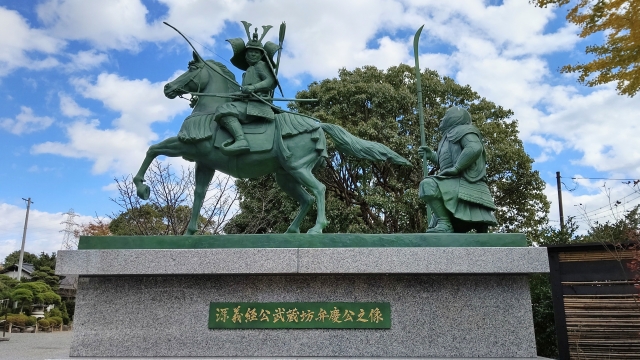
Shirohata Shrine warmly welcomes many worshippers every day as a shrine rooted in the community. Seeking the divine virtues of Minamoto Yoshitsune and Samukawa Hiko-no-mikoto, a wide range of people, from students preparing for entrance exams to athletes and local residents, visit the shrine and offer their prayers in silence.
Worship Manners and Manners to Visit the Shrine
Visiting Shirahata Shrine is done in accordance with the general manners of shrine visits. When passing through the torii gate, bow and walk away from the center of the path. After purifying your hands and mouth at the hand- and mouth-watering booths, you should enter the shrine in front of the hall of worship in the manner of “ni-sho, ni-sho, ni-katte, ni-katte, ni-katte.
The temple grounds are quiet, so please be considerate of other visitors and refrain from loud conversations. When touching Benkei no Chikaraishi, please do so carefully and in order, keeping in mind that this is a place used by many people. Photography is allowed, but in consideration of the privacy of visitors, it is good manners to refrain from taking pictures inside the main shrine.
The shrine accepts various prayers according to the season, including those for academic achievement, success in school, good health, and protection from bad luck. If you wish to pray, we recommend that you contact the shrine office in advance.
Annual & Seasonal Events
Various festivals are held throughout the year at Shirahata Shrine. The most important festival is the regular festival on July 21, which attracts many worshippers, including the shrine parishioners, and is held on a grand scale. This festival is a traditional event that has continued since the Edo period (1603-1867), and used to have an important meaning as a day for settlement of business transactions called “Shirohata Account”.
On October 28, the autumn festival is held and Yudate Kagura, an intangible folk cultural property designated by Fujisawa City, is dedicated. This kagura is a traditional performing art that has been handed down in the region since the Edo period (1603-1868). The structure of the mountain-making process, in which a canopy is made of five-colored shimen and bamboo, and the shimen-kiri are considered to be a secret tradition. In particular, the “Sasanomai” ritual, in which boiling water is used to perform the ritual, leaves a deep impression on the audience.
The Ushiwaka Festival on May 5 is an event to pray for the growth of children, and beautiful carp streamers are hung in the shrine grounds. During this period, wisteria flowers are at their best, attracting many families. In addition, many visitors come to the shrine in January to pray for good luck in the New Year as the Bishamonten temple in the Fujisawa Shichifukujin Meguri (seven gods of good fortune) tour.
Red Seal and Good Luck Charm Information
Shirohata Shrine offers beautiful red seals, especially popular are the special designs stamped with the seals of Minamoto no Yoshitsune and Benkei. Red seals are available at the shrine office between 9:00 a.m. and 5:00 p.m., and the initial fee is in the form of “oshi (a small consideration). It is recommended to have small change or 1,000 yen bills ready so that you do not have to pay change.
The original red seal of Shirahata Shrine bears the silhouette seal of Yoshitsune and Benkei, drawn by Fujisawa-based manga artist Eriko Sano, and is a rare and precious design that cannot be seen anywhere else. The Bishamonten red seal, which is part of the Fujisawa Seven Lucky Gods Tour, also features a Bishamonten seal by Eriko Sano.
The red seal book also has a beautiful original design of Yoshitsune and Benkei, and is available in both regular and large sizes. The lively figures of the two men, drawn with gold lines, have a unique embroidered touch and are highly appreciated by red seal enthusiasts.
The Benkei Rikishi-mamori amulet is particularly popular, and is awarded to those who wish for good health and healing from illness. Other amulets are available for academic achievement, success in school, and protection from bad luck, allowing visitors to choose the one that best suits their wishes.
Access and Information
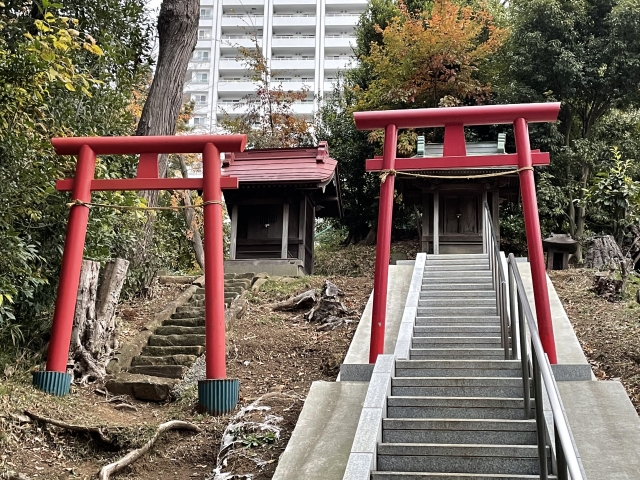
Shirahata Shrine is located in the center of Fujisawa City and is easily accessible by public transportation. It is also easily accessible from central Tokyo, and many visitors come to the shrine in conjunction with sightseeing in Enoshima.
Transportation Access
The nearest station to Shirahata Shrine is Fujisawa-Honmachi Station on the Odakyu Enoshima Line. It is about a 6-7 minute walk from the station to the shrine, and directions are easy to follow as it is located along National Route 467 (Hachioji Kaido). From Fujisawa-Honmachi Station, head northeast and look for the Shirohata intersection.
It is also accessible on foot from JR Fujisawa Station, a distance of about 15 minutes. Several train lines are available from Fujisawa Station, making it convenient for visitors coming from far away. The Shirahata Shrine is also accessible by bus, with the Kanagawa Chuo Kotsu bus stop at Shirahata Shrine-mae.
If coming by car, it is convenient to use Route 467. It takes about 30 minutes from the Atsugi Interchange on the Tomei Expressway and about 40 minutes from the Asahina Interchange on the Yokohama-Yokosuka Road. When using a car navigation system, we recommend that you search for “Shirahata Shrine” or the address.
Hours of Adoration, Fees, and Parking Information
There are no restrictions on visiting hours at Shirohata Shrine, but the shrine office is open from 9:00 am to 5:00 pm for the awarding of red seals and various amulets. The shrine is open to visitors all year round, but there may be restrictions on visiting during festivals and rituals, so please inquire in advance if you wish to visit on special dates.
There is no fee to visit the shrine. If you wish to pray, please ask at the shrine office for the prayer fee, which varies depending on the content. The first fee for a red seal is in the form of an “oshi” (a small token of appreciation), and is generally around 300 yen.
Parking for approximately 20 cars is available on the grounds of the shrine, and is free of charge. The unique feature of the parking lot is that it is designed to allow visitors to enjoy the sights and sounds of the temple grounds immediately after parking their vehicles. However, public transportation is recommended during festivals and events, when crowds are expected.
Credit cards (VISA, MasterCard, UnionPay) and electronic money (Suica, PASMO, QUICPay, iD, nanaco, WAON) are accepted for payment, so you can visit the temple without bringing cash. Wi-Fi (Shirchata-Jinje01) is available on the premises, so you can post photos of your visit to SNS on the spot.
<Address> 2-4-7 Fujisawa, Fujisawa-shi, Kanagawa 251-0052
Reference site
Soshu Fujisawa Shirahata Shrine Official Website: https://www.shirahata-jinja.jp/
Kanagawa Prefectural Shinto Shrine Office: https://www.kanagawa-jinja.or.jp/shrine/1206042-000/



